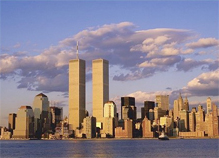Time and Redemption Among the Living and the Dead
It had been six long weeks since I returned from a backcountry trip to Utah, and six exhausting weeks at that. Thoroughly drained, it was high time to leave my demons behind (or try to), and seek comfort in the clean fall air of the White Mountains of New Hampshire.
Saturday morning found me not on a trail that would lead to the dramatic viewpoints popular at peak-foliage time, but instead on one that would thread the valleys between the peaks, meander past beaver ponds, and eventually bring me back to my point of departure, suitably (I hoped) refreshed.
The landscape I explored all that day proved to be unexpectedly spectral, haunted by the shadows of countless thousands of dead birches that loomed above a maturing understory of hemlock, spruce and maple. The explanation for their presence was not hard to guess: birch is a "pioneer" species with small, easily wind-borne seeds that sprout into seedlings that not only tolerate, but demand bright sunlight to survive. Throughout the west, aspens are the opportunists that retake the clearings. But in these northeastern woods, it is birch that is most likely to colonize areas burned by fire, or (like this) clearcut by man.
But birch is not a long-lived tree. The thousands of pioneers that together sprouted on these mountainsides a century ago had now together died, their reforesting mission accomplished. In the years that followed, their twigs rotted and dropped, and then their larger branches. Now, like hapless lepers, they raised only blunted limbs to the sky.
 It's rare that standards are featured so prominently in a documentary, and even more unusual for them to be
It's rare that standards are featured so prominently in a documentary, and even more unusual for them to be